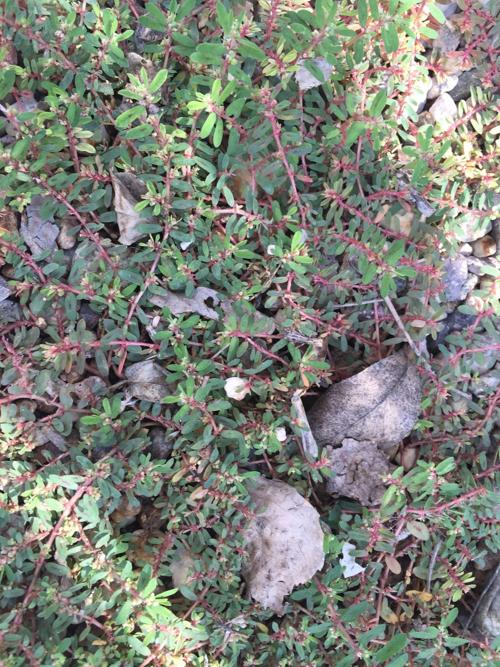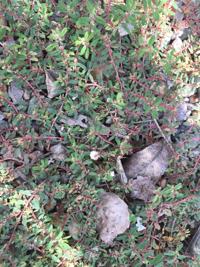Q: I have some low weeds (spurge?) that are slowly taking over my tiff-green lawn. They are easy to kill in the gravel but what can I do about the lawn? Would something like Weed-B-Gone work and not kill the grass? What are your recommendations about fertilizing? Maybe a healthier lawn would crowd them out?
A: A healthier lawn would be the best thing to prevent spurge and other weeds from becoming established and that begins with good fertility for the grass. Ideal lawn fertilizers have a fertilizer ratio of 3:1:2 (examples: 15:5:10; 21:7:14) or 4:1:2 (example: 20:5:10).
Some lawn fertilizers may be classified as “slow release” because they release their nutrients slowly over weeks or months after an application. Quick release fertilizers are less desirable since they release nutrients in a very short period of time resulting in more frequent mowing.
People are also reading…
Begin fertilizing after the grass turns green and there is little chance of a late frost, usually around April depending on your elevation. The last fertilizer application is usually no later than August if you are planning to overseed with a cool season grass.
The cool season grass used in overseeding dictates fertilizer applications during winter. If Bermuda grass is not to be overseeded, then late fall applications of nitrogen (October and November) can be used and may delay the onset of the winter brown color by a month or more if fall temperatures are mild.
Spurges are difficult to control, warm season, broadleaf weeds of landscapes, gardens and turf in the low deserts of Arizona. Fast growing and easily dispersed, spurges rapidly colonize and blanket areas where there is ample sunlight and moisture. Dicamba and 2,4-D are herbicides that control broadleaf plants only and can be used to selectively kill spurge in turfgrass without harming the grass.
These active ingredients are found a number of products including weed-b-gone. Be careful to stay away from other broadleaf plants such as trees and shrubs because the herbicide will kill them as well. It is probably best to spot treat to minimize the chance of damaging other nearby plants.
Beware that spurges sometimes harbor stinging ants. Some species of spurge have specialized structures called extrafloral nectaries, not for pollinators but that produce nectar as a food source for ants, which ants aggressively defend when the plant is disturbed. People with allergies or sensitivity to ant venom are at risk and should be careful around spurge.
Peter L. Warren is the urban horticulture agent for the Pima County Cooperative Extension and the University of Arizona. Questions may be emailed to plwarren@ cals.arizona.edu













